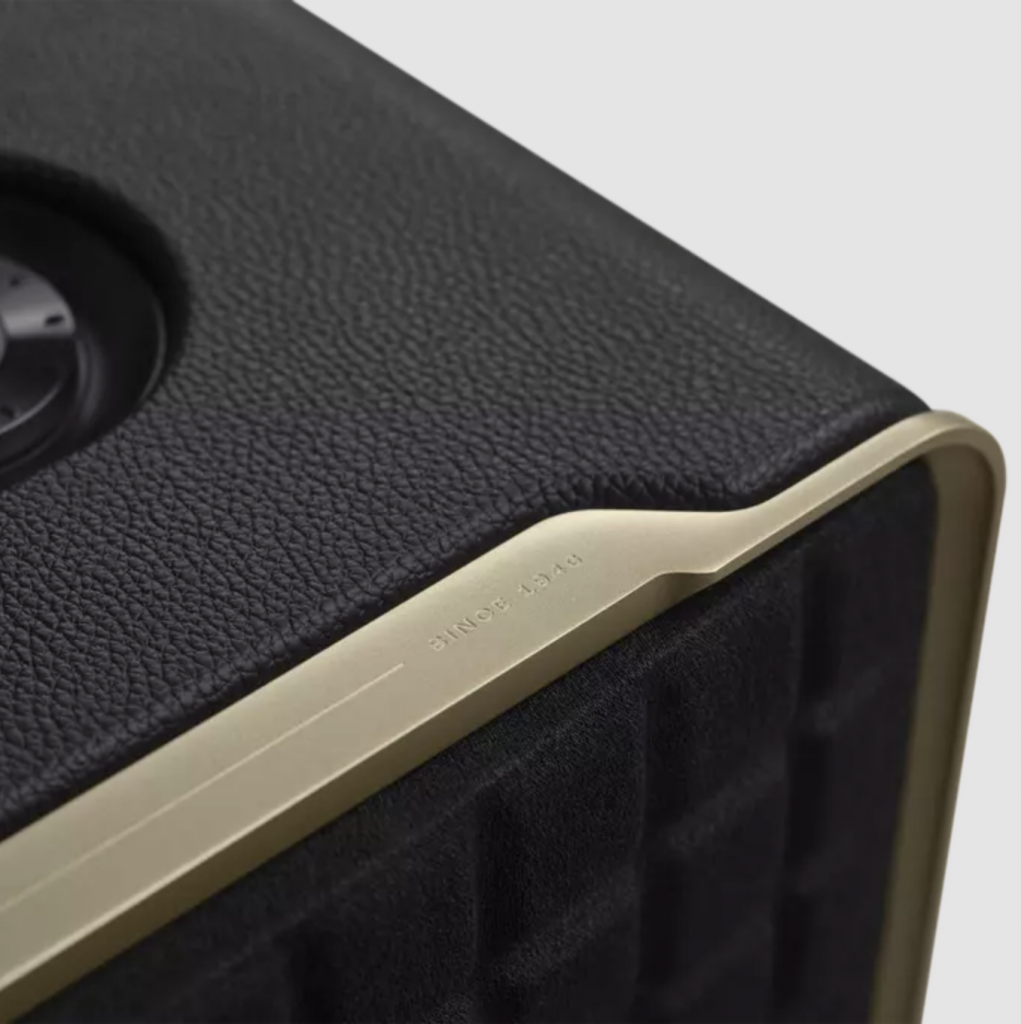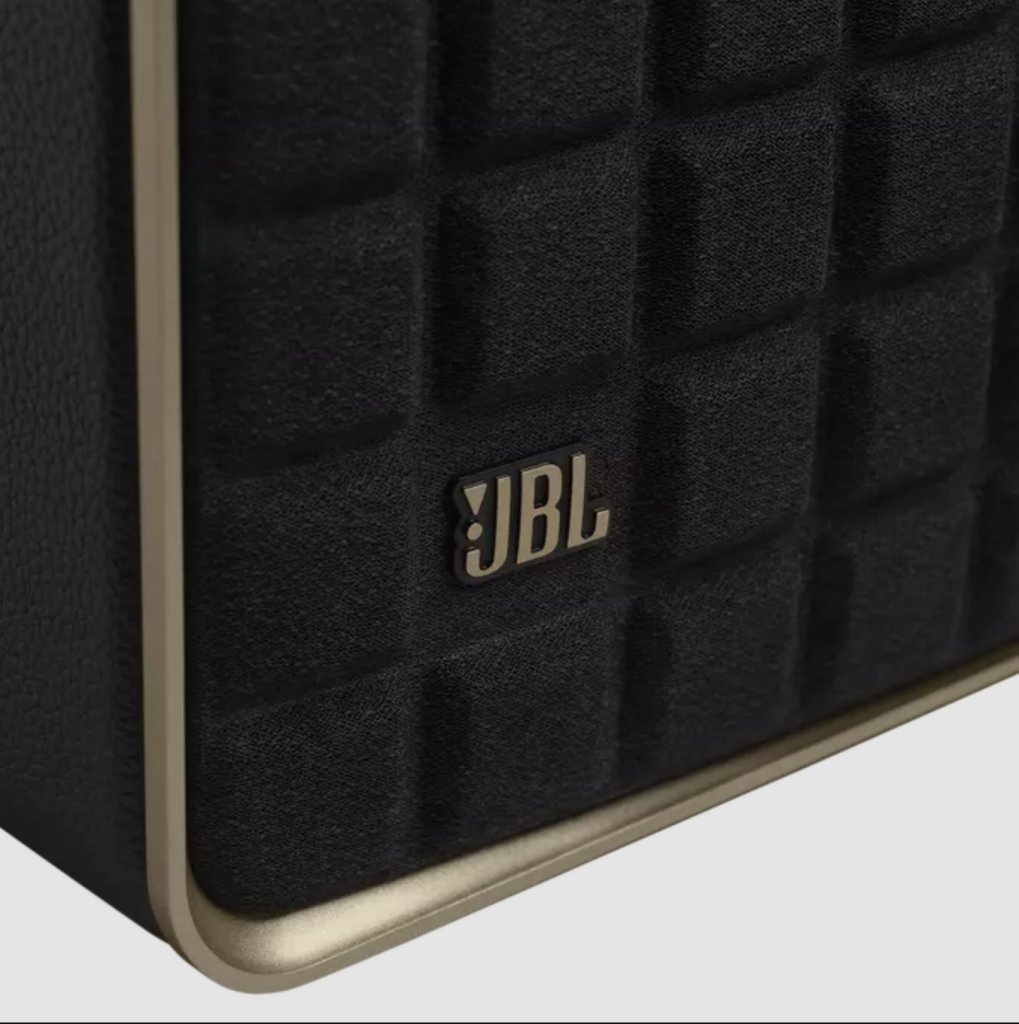JBL takes immense pride in its latest Authentics speaker range. The source of this pride stems from multiple aspects: firstly, the nostalgic design that pays homage to the iconic L-100 speakers of the 1970s; secondly, the unequivocal sound quality; and finally, the comprehensive support for various streaming services and cutting-edge technologies. However, when I had the opportunity to experience one of these speakers firsthand, what truly captured my attention was its remarkable ability to seamlessly run both Google Assistant and Alexa concurrently, actively responding to their respective wake words simultaneously.
This groundbreaking achievement marks a significant milestone in the realm of voice assistants. While it’s not the inaugural instance of two prominent voice assistants coexisting within a single speaker, nor is it the first occurrence of such simultaneous functionality, it is a noteworthy departure from the norm. Previously, Sonos had introduced speakers featuring both Google Assistant and Alexa, yet only one could be operational at any given time, precluding the possibility of both assistants actively listening and responding to commands. Furthermore, Alexa could coexist with Sonos’s proprietary Voice Control service, but not with Google Assistant.
Hence, the ability to have both Alexa and Google Assistant, two of the most robust and widely adopted voice assistants, concurrently awaiting their respective wake words, represents a remarkable advancement in this technology landscape.

Physical controls for adjusting trebles and bass levels 
Equipped with handle
I received a demonstration of the JBL Authentics 300, which stands as the middle sibling within the newly launched Authentics series. This lineup includes the $329.99 Authentics 200, a smaller and less potent version, and the $699.99 Authentics 500, a larger model equipped with an active subwoofer and support for Dolby Atmos. Positioned at $429.99, the Authentics 300 occupies the space between them in terms of size, power, and price. It’s noteworthy that the Authentics 300 is the sole member of the series with a battery, boasting approximately eight hours of playback on a single charge, according to JBL’s claims.
Regarding the collaboration between Alexa and Google Assistant, based on my brief experience with the speaker, it appears they function well together, albeit with certain considerations.
The two voice assistants don’t compete directly, but their alignment is not always consistent.
During my demonstration, I observed that general voice commands yielded the most effective results. When I instructed Google to initiate music playback or requested Alexa to adjust the volume afterward, both voice assistants executed the tasks seamlessly. Similarly, if I initiated a countdown using Alexa and subsequently asked Google to mute the resulting alarm, Google complied without hesitation when I issued the command “Hey Google, stop.”
However, complications arose when I employed commands tailored to the specific content being played. For instance, I directed Google to set a timer and then instructed Alexa to stop it before it concluded. In response, Alexa reported, “there are no timers set.” Likewise, when I asked Alexa to read the news and then commanded Google to “stop the news,” Google Assistant cheerfully informed me that “nothing’s playing right now” (though the more general command “Hey Google, stop” functioned as expected).
Consequently, these two voice assistants do not consistently synchronize seamlessly, necessitating some trial and error to determine the most effective way to use them in tandem. This process paralleled the initial trial and error experience of interacting with a voice assistant, wherein one must ascertain which voice commands each assistant comprehends and responds to.
Apart from their voice assistants, which can be easily deactivated using a physical mute switch located on the rear panel, these speakers exhibit thoughtful design and impressive specifications. All three models in the series feature a trio of knobs atop them – one for adjusting volume (as expected) and two additional ones for manually fine-tuning the speakers’ bass and treble levels. According to Jurjen Amsterdam, a director of product marketing at Harman, JBL’s parent company, the inclusion of these EQ controls directly on the speaker serves a purpose when multiple individuals within a household utilize the speaker, particularly if only one of them has the JBL companion app installed. However, Amsterdam also acknowledges that the abundance of physical dials serves an aesthetic purpose as well, contributing to the overall retro design ethos. He remarks, “It’s an integral part of the design,” adding that this design philosophy harkens back to a more vintage sensibility.
One of the most conspicuous retro elements in the lineup is the front grille, which boasts the same textured pattern as the company’s classic L-100 speakers, along with their more contemporary home speaker offerings. Currently, the new JBL Authentics are exclusively available in black, but when questioned about the possibility of other colors, such as JBL’s signature orange, Amsterdam notes that the company’s primary focus is ensuring the success of the black variant before delving into experimentation with alternative color options.
You receive physical bass and treble adjustment knobs.
Beside the trio of control dials, you’ll find a versatile “moment” button that can be customized to automatically initiate playback of a playlist or radio station from any of the streaming services integrated into JBL’s companion app. Unfortunately, this feature doesn’t extend to services compatible with the speaker but not integrated into JBL’s app (with Spotify being a prime example). Nevertheless, it grants you the convenience of setting the button to play your preferred radio station through TuneIn without the need to launch a separate app each time.
Regarding connectivity, JBL’s Authentics speakers offer conventional Bluetooth and a 3.5mm auxiliary input, along with Ethernet support for wired internet connections. They boast broad compatibility with various streaming services and multi-room systems, including AirPlay, Alexa Multi-Room Music, Spotify Connect, and Chromecast built-in. Furthermore, a forthcoming firmware update will introduce support for Tidal Connect (for now, Tidal can be accessed through the JBL app). Future firmware updates will also enable the pairing of multiple JBL speakers, facilitating the creation of stereo and multi-channel surround sound configurations.
Assessing the audio quality at a launch event demonstration, where you’re surrounded by unfamiliar faces and listening to unfamiliar music, can be challenging. Nevertheless, my initial impressions of JBL’s three Authentics speakers suggest they deliver a powerful audio experience. Even the compact Authentics 200 exhibits substantial presence, and as you progress through the lineup, the soundstage becomes more expansive. The pinnacle of this audio range is the Atmos-enabled Authentics 500, which excels in sound separation. This particular speaker boasts three 1-inch tweeters, three 2.75-inch midrange woofers, and a 6.5-inch active subwoofer, while the lower-tier speakers in the lineup feature fewer drivers and passive radiators.

Wrapped in synthetic leather 
Speaker grill is classic JBL
Regarding sustainability, JBL promotes the Authentics speakers as being constructed with environmentally friendly materials. These speakers incorporate 100 percent recycled fabric, 85 percent recycled plastic, and 50 percent recycled aluminum in their production. Furthermore, the battery in the Authentics 300 is designed for easy replacement as it naturally degrades over time. Presently, authorized service centers handle the replacement, but the company is actively working towards allowing users to replace it themselves, aligning with upcoming EU regulations set to take effect in 2027.
A significant query that neither I nor my colleague, Jennifer Pattison Tuohy, were able to definitively address during our discussions with Harman, Google, and Amazon is whether we can expect more speakers to offer simultaneous compatibility with both Alexa and Google Assistant in the future. Evidently, considerable effort has been invested by these three companies in developing this feature, and based on my demonstration, it appears that most of the technical challenges have been successfully overcome.
However, at present, the provision of simultaneous access to both voice assistants appears to be positioned as an experimental venture, with its potential repetition remaining uncertain. Marissa Chacko, Google’s Director of Product Management for Google Assistant for Home, conveyed to my colleague Jennifer, “This is the initial trial. We want to evaluate its performance and assess if there is a demand for it.”

